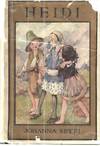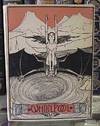
I Quattro Libri dell'Architettura di Andrea Palladio. Ne' quali, dopo vn breue trattato de' cinque ordini, & di quelli auertimenti, che sono piu necessarij nel fabricare; si tratta delle case private, delle vie, de i ponti, delle piazze, de i Xisti, et de' tempij
by Palladio, Andrea (1508-1580)
- Used
- Fine
- Hardcover
- Condition
- Fine
- Seller
-
Chevy Chase, Maryland, United States
Payment Methods Accepted
About This Item
Venice: Apresso Bartolomeo Carampello, 1581. SECOND EDITION (1st 1570), seen through the press by Palladio's son, Silla. Hardcover. Fine. An attractive, unsophisticated copy, bound in contemporary vellum (re-used from an identified Hebrew manuscript, the text of which is on the inward facing side of the manuscript leaf and can be vaguely discerned.) Aside from discreet repairs to the vellum, a copy with no interventions, the condition very appealing. Binding soiled with defects to spine and corners, original rawhide ties largely intact. The text is overall very fresh with minor signs of use: contents shaken with very slight curling at the fore-edge of the opening gatherings, light wear and soiling to the first leaf, with a small (15 mm.) worm-trail in the blank margin; scattered light marginal damp-stains, some finger-soiling at the margins on various leaves, a few light ink stains; small defect to the lower corner of the final leaf (without touching the text or illustration.) Provenance: Jacopo Manzoni (1816-1889), whose library was dispersed at auction between 1892 and 1894. The book boasts four elaborate architectural title pages incorporating Domenico de' Franceschi's "Regina virtus" device (this device also appears above the colophon.) The text is profusely illustrated with hundreds of fine, extremely detailed woodcuts of architectural elements, plans, cross-sections, and elevations of ancient and modern buildings (including some of Palladio's own projects), a large number of which occupy the full page. The chapter on the Pantheon is famous for its double-paged elevation of the monument.
"Andrea Palladio, the author of the most studied of the architectural treatises of the Renaissance, the third great work of the sixteenth-century after Serlio and Vignola, was the most distinguished practicing architect of the second half of the sixteenth-century. The most effective representative of the new principles of architecture in northern Italy, his architectural practice and his architectural theory are equally balanced in his work, offering a coherent expression in its corpus of ideas and buildings. Superior to Vignola's in richness and importance, Palladio's treatise was the most popular publication by any architect.
"Palladio's 'Quattro Libri' is divided into four distinct parts. In the first book he deals with the fundamental principles of architecture and with building materials. The core of the first book is the description of the five orders of architecture, followed by a discussion of the main parts of buildings, and an account of different room types... In its devotion to private dwellings, particularly the villa, the second book of Palladio's treatise is a singular and novel contribution. Palladio illustrates numerous of his own built or projected domestic designs, which are related to his research to reconstruct the houses of the ancient Greeks and Romans... In Book III, Palladio is concerned with the construction of the city, devoting special attention to bridges, streets, gates, and constituent public buildings such as basilicas. His chapter on bridges has been praised as 'the most comprehensive treatment of the subject before the eighteenth-century' (Boucher 1994)... In the fourth book of the treatise, Palladio turns to ancient architecture, specifically the architecture of ancient temples, which he considers the most important buildings of a city, echoing Alberti's earlier assertion."
"The 'Quattro Libri' is the most handsome of the principal Renaissance treatises on architecture, with the most successful integration of word and image... The rigorous and coherent principles of the illustrations in the 'Quattro Libri' have often been remarked upon. Palladio acquired firsthand knowledge of ancient Roman buildings through the intense study and drawing of ruins in Rome. He made detailed drawings of the ancient monuments and his drawings attempted to reconstruct the ancient buildings. Unlike Serlio, Palladio drew to scale in orthogonal projection, using shaded sections rather than perspective drawings, and his drawing style matured with successive trips to Rome. Showing himself a scientist, Palladio draws transparent illustrations, effectively offering an anatomy of architecture...
"Palladio's careful pages, where text and illustrations are coherent and neatly separated, are a thorough departure from the typographical layout adopted by Serlio, 'who mixed orthogonal and perspectival elements' and 'fitted commentary around the illustrations' (Boucher 1994)."(Millard, Italian Books).
"Andrea Palladio, the author of the most studied of the architectural treatises of the Renaissance, the third great work of the sixteenth-century after Serlio and Vignola, was the most distinguished practicing architect of the second half of the sixteenth-century. The most effective representative of the new principles of architecture in northern Italy, his architectural practice and his architectural theory are equally balanced in his work, offering a coherent expression in its corpus of ideas and buildings. Superior to Vignola's in richness and importance, Palladio's treatise was the most popular publication by any architect.
"Palladio's 'Quattro Libri' is divided into four distinct parts. In the first book he deals with the fundamental principles of architecture and with building materials. The core of the first book is the description of the five orders of architecture, followed by a discussion of the main parts of buildings, and an account of different room types... In its devotion to private dwellings, particularly the villa, the second book of Palladio's treatise is a singular and novel contribution. Palladio illustrates numerous of his own built or projected domestic designs, which are related to his research to reconstruct the houses of the ancient Greeks and Romans... In Book III, Palladio is concerned with the construction of the city, devoting special attention to bridges, streets, gates, and constituent public buildings such as basilicas. His chapter on bridges has been praised as 'the most comprehensive treatment of the subject before the eighteenth-century' (Boucher 1994)... In the fourth book of the treatise, Palladio turns to ancient architecture, specifically the architecture of ancient temples, which he considers the most important buildings of a city, echoing Alberti's earlier assertion."
"The 'Quattro Libri' is the most handsome of the principal Renaissance treatises on architecture, with the most successful integration of word and image... The rigorous and coherent principles of the illustrations in the 'Quattro Libri' have often been remarked upon. Palladio acquired firsthand knowledge of ancient Roman buildings through the intense study and drawing of ruins in Rome. He made detailed drawings of the ancient monuments and his drawings attempted to reconstruct the ancient buildings. Unlike Serlio, Palladio drew to scale in orthogonal projection, using shaded sections rather than perspective drawings, and his drawing style matured with successive trips to Rome. Showing himself a scientist, Palladio draws transparent illustrations, effectively offering an anatomy of architecture...
"Palladio's careful pages, where text and illustrations are coherent and neatly separated, are a thorough departure from the typographical layout adopted by Serlio, 'who mixed orthogonal and perspectival elements' and 'fitted commentary around the illustrations' (Boucher 1994)."(Millard, Italian Books).
Reviews
(Log in or Create an Account first!)
Details
- Bookseller
- Liber Antiquus
(US)
- Bookseller's Inventory #
- 4851
- Title
- I Quattro Libri dell'Architettura di Andrea Palladio. Ne' quali, dopo vn breue trattato de' cinque ordini, & di quelli auertimenti, che sono piu necessarij nel fabricare; si tratta delle case private, delle vie, de i ponti, delle piazze, de i Xisti, et de' tempij
- Author
- Palladio, Andrea (1508-1580)
- Format/Binding
- Hardcover
- Book Condition
- Used - Fine
- Quantity Available
- 1
- Edition
- SECOND EDITION (1st 1570), seen through the press by Palladio's
- Publisher
- Apresso Bartolomeo Carampello
- Place of Publication
- Venice
- Date Published
- 1581
Terms of Sale
Liber Antiquus
Returns accepted within 7 days of receipt. All returns must be packed, insured, and shipped as they were sent. All returns must arrive safely and in the condition in which they were sent before a refund will be issued.
About the Seller
Liber Antiquus
Biblio member since 2020
Chevy Chase, Maryland
About Liber Antiquus
Liber Antiquus sells early printed books (15th to 18th century) and early manuscripts in a number of fields. We have been in business for 22 years and are a member of ABAA and ILAB.
Glossary
Some terminology that may be used in this description includes:
- Fine
- A book in fine condition exhibits no flaws. A fine condition book closely approaches As New condition, but may lack the...
- Device
- Especially for older books, a printer's device refers to an identifying mark, also sometimes called a printer's mark, on the...
- Soiled
- Generally refers to minor discoloration or staining.
- New
- A new book is a book previously not circulated to a buyer. Although a new book is typically free of any faults or defects, "new"...
- Colophon
- The colophon contains information about a book's publisher, the typesetting, printer, and possibly even includes a printer's...
- Gatherings
- A term used in bookbinding, where a gathering of sheets is folded at the middle, then bound into the binding together. The...
- Vellum
- Vellum is a sheet of specialty prepared skin of lamb, calf, or goat kid used for binding a book or for printing and writing. ...
- Leaves
- Very generally, "leaves" refers to the pages of a book, as in the common phrase, "loose-leaf pages." A leaf is a single sheet...
- Shaken
- A hardcover in which the text block is loose, but still attached to the binding.
- Spine
- The outer portion of a book which covers the actual binding. The spine usually faces outward when a book is placed on a shelf....













